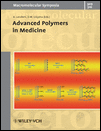Reducing the Endotoxin Burden of Desaminotyrosine- and Desaminotyrosyl Tyrosine-Functionalized Gelatin
Abstract
Biomaterial-induced autoregeneration requires materials with distinct tailored mechanical and thermal properties, water uptake and swelling properties as well as degradation behavior. Furthermore, before any biomaterial can be applied in vivo, in vitro studies should be performed that confirm the suitability for such applications. One facet in this process is the evaluation of endotoxin loads and immunogenic response to the material to avoid an unspecific activation of the immune system, which otherwise might cause fever and could lead to life–threatening pathologies. In this study, gelatins functionalized with desaminotyrosine (DAT) or desaminotyrosyl tyrosine (DATT) were investigated in terms of their endotoxin content and their potential to induce an inflammatory cytokine response in macrophages. Using the Limulus amebocyte lysate (LAL) test it could be shown that the endotoxin content was substantially reduced by using certified low endotoxin containing gelatin and performing the gelatin functionalization under cleanroom conditions. Furthermore, production of inflammatory cytokines such as interleukin 6 (IL-6) and tumor necrosis factor–alpha (TNFα) of an immune relevant macrophage cell line was significantly reduced for these materials. The survival of the macrophage cell line in the presence of DAT(T)-functionalized gelatins was not influenced by both materials. Therefore, DAT- and DATT-functionalized gelatins were shown to have passed the tests concerning immunological responses important for their applicability in vivo.




